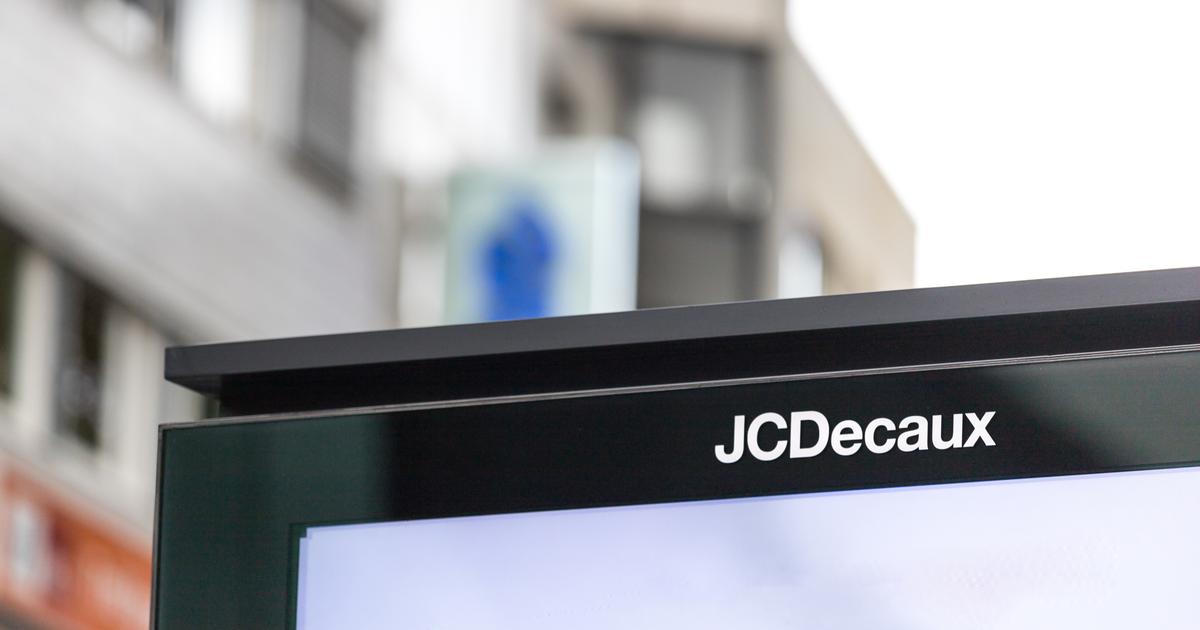Enlarge image
Even digital companies like Facebook rely on outdoor advertising.
Meanwhile, it is becoming more and more digital
Photo:
Andreas Arnold / picture alliance / dpa
At Dmexco, a trade fair for online advertising, Rasmus Giese, chairman of the online marketing group (OVK) in the BVDW trade association, was able to announce good news: In the corona year, sales of advertising on websites, digital commercials and in-app advertising in Germany increased 23.4 percent.
According to estimates by the association, more than five billion euros will flow into the “digital display advertising” business in 2021 alone.
Now other industries also want to benefit from the booming online business.
The German advertising group Ströer, market leader in advertising on billboards and advertising pillars, presented its digital range at Dmexco.
The Cologne provider is currently building more and more huge video screens on the roadside and in train stations in German cities.
There are also tens of thousands of screens in shop windows and in stores.
These now compete with the old paper poster.
Instead of sticking a motif on for several days or even weeks, advertisers can buy targeted commercials there: For example, zoo advertising could appear when parents bring their children to school, a commercial for pizza delivery services when working people are in the end of the day.
In order to be able to participate in the lucrative market, Ströer must give its advertising customers precise data on which target groups see this advertising.
Online beats TV
An essential reason for the digital boom is easy access to customer data. Whoever places an advertisement in a newspaper ultimately pays for every reader who buys the newspaper. Anyone who places the same ad on the newspaper's website can only display it to a selected target group. This is not only cheaper, but also more effective - at least the industry promises. This is popular with advertising customers: According to statistics from the Central Association of the Advertising Industry, companies now spend more money on moving image advertising on the Internet than on traditional TV spots.
Personalized advertising - or, as the advertisers themselves put it, data-driven advertising - is increasingly determining the market.
In a decade, the way the industry works has almost turned around: instead of looking for media and websites that cover a specific target group, advertisers book their target group.
Website operators can then apply on auction platforms to display this advertising.
The real-time auctions are automated - algorithms decide in milliseconds who can fill an advertising space and at what price.
Or whether it remains empty.
The main thing is that the target group is reached.
Whether the advertisement appears on a website, in an app or on a giant screen at the roadside is of secondary importance.
The smartphone as a data source
To this end, Ströer has entered into two partnerships. On the one hand, Deutsche Telekom supplies the advertising company with data about its mobile communications customers: Ströer does not know exactly where a customer is, but it can precisely evaluate how many Telekom customers have passed a certain billboard. The telecommunications giant also provides target group data on the age and gender of passers-by.
Both Ströer and Deutsche Telekom assure that this data is not traceable and cannot be assigned to individual customers. They point out that it would be absurd to play commercials for individual customers when they are seen by dozens of passers-by. The one-to-one relationship between advertisers and consumers, as in the browser or in a smartphone app, does not exist here. If you still want to opt out of data collection, you can unsubscribe on a Telekom website.
However, the data provided by the group is not enough to satisfy the hunger for data of today's advertisers. That is why Ströer has set up a joint venture with the Otto Group. Its goal: to analyze the customer's purchase history in order to define target groups. The size of the data pools is enormous - Ströer manager Andreas Heintze said shortly before the Dmexco: "In the end, we have more login data than Facebook." According to the industry organization AGOF, Ströer can access 37 million German accounts, Facebook 31 million. Amazon holds the top position with 49 million.
These data make it possible to track users across the network as well as on their way through the city. For example, on behalf of Sony, the provider Viooh analyzed where and when computer gamers were in Brussels and played advertisements for a new computer game there.
TV stations such as RTL and the ProSiebenSat.1 Group are working on similar models. They are already using cookies on smart TVs to analyze the viewing habits of viewers. In the next step, these should pair your mobile phone with the television so that TV spots can be repeated on the smartphone. Such a link also enables a new form of reach measurement: advertisers could find out how many customers decided to buy a product after a commercial, in which supermarkets they shop and which apps they have installed.
To do this, the advertising industry must first obtain user permission. German providers unanimously assure that they meet all legal requirements and work in accordance with the General Data Protection Regulation. But this assumption is currently shaky. The British data protection officer Elizabeth Denham has just made the cookie banners, which are unpopular on all sides, the subject of a meeting of the G7 countries.
Their argument: If users are asked on almost every website and in almost every app to release their data for advertising evaluation, this consent is no longer worth anything.
“This excessive demand ensures that people release more data than they really want,” says Denham.
In addition, data protectionists argue that customers cannot overlook the scope of this data release when in the cookie banners
Often more than 100 companies are listed that store data.
In the meantime, the EU Commission and the EU Parliament have also intervened and are planning significant restrictions on advertising targeting.
Partly because this form of advertising finances fake news sites.
Publishers protest against such an equation: Even qualitative reporting would lose a lot of money if data analysis were restricted.
After all, today more than two thirds of sales with online advertising are generated on advertising marketplaces that are based on user data.
A large part of the advertising on SPIEGEL.de is now also automatically placed using such algorithms.
With the PUR subscription, DER SPIEGEL can also be read in a form that is free of advertising tracking.
From data protection to privacy protection?
Thomas Duhr, Vice President of the industry association BVDW, suggested at Dmexco that we no longer talk about "data protection", but rather about "privacy protection". The argument: The data that is passed billions of times every day through advertising marketplaces, which are constantly being evaluated, repackaged and resold, is not a threat to the privacy of consumers, as they are not assigned specific names and the industry protects the data stocks well.
However, the case of the ultra-conservative Catholic website "The Pillar" demonstrated that such data can sometimes be traced. It is still unclear where the data came from: the business with advertising data is too confusing and branched out. In addition, databases that appear harmless in themselves can enable users to be identified if they are combined with other data sets.
After the Dmexco, it is still very unclear where the billion dollar business with online advertising is heading. Many providers of advertising data assure that they have now been able to compensate for the setback caused by Apple's boycott of some tracking techniques. But if Google, as announced, also abolishes advertising cookies, the business models of many companies will be shaken. Some companies are working on ID solutions that are supposed to square the circle, to combine the protection of privacy and the unrestrained evaluation of customer data. But how this fits in with the plans of the EU legislators will only become clear when they present their plans in detail.









